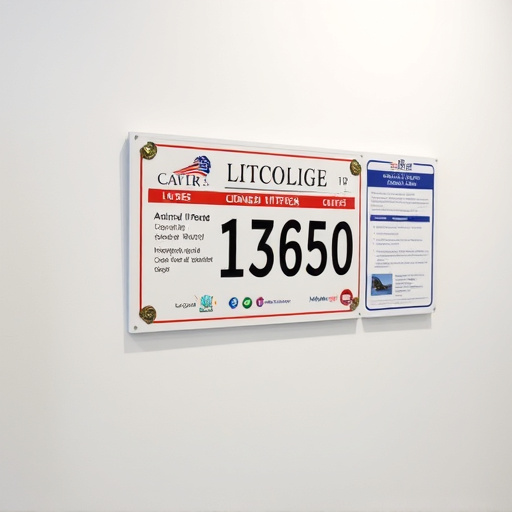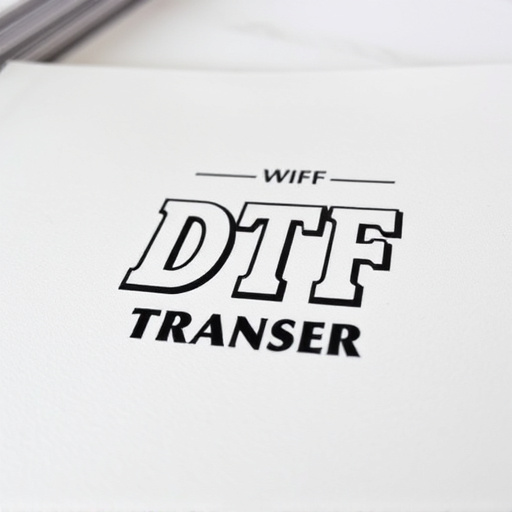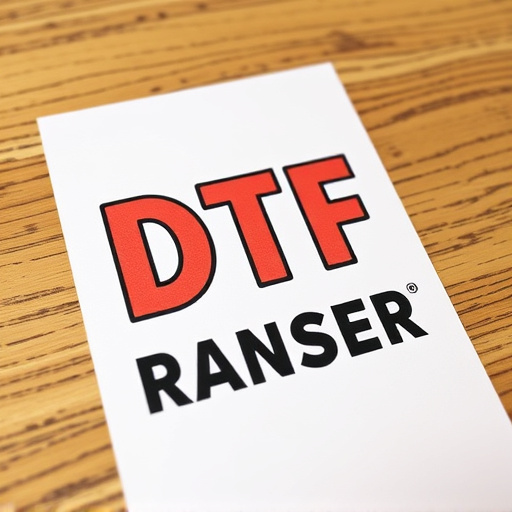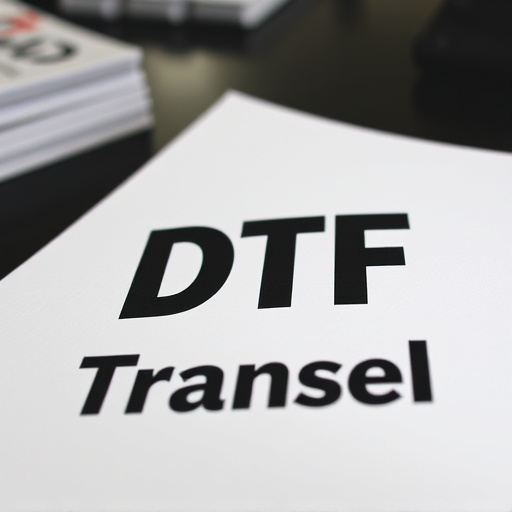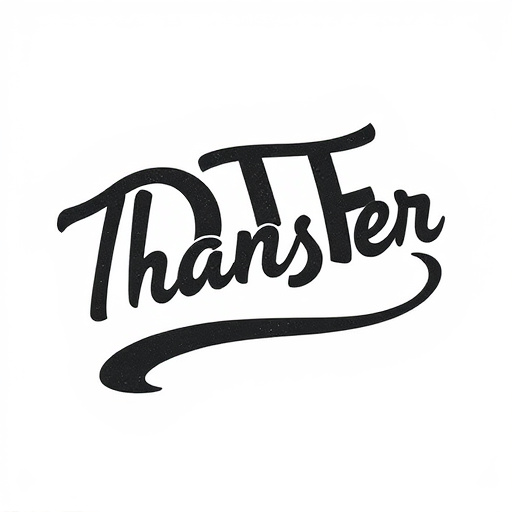The DTF transfer process relies on a carrier film for precise printing onto materials like textiles and plastics. Removing this film is crucial but challenging, requiring skill to avoid damaging intricate designs or leaving residue. Physical techniques like peeling with a scraper or squeegee are efficient, while chemical solutions dissolve adhesives. Advanced methods include specialized solvents and heat treatments for detailed prints. Best practices in pre-printing preparation ensure optimal DTF transfer results through cleanliness, high-quality materials, consistent settings, adequate drying, and equipment maintenance.
Unleash the potential of your DTF prints by mastering the art of removing carrier film post-application. This comprehensive guide delves into the intricacies of DTF transfers and the challenges faced during film extraction. From physical techniques for swift removal to chemical solutions for meticulous cleaning, we explore diverse methods. Discover advanced practices for delicate prints, ensuring optimal DTF printing results every time. Elevate your skills and unlock the full beauty of your DTF works.
- Understanding DTF Transfer and Carrier Film
- Common Challenges with Removing Carrier Film
- Physical Techniques for Easy Removal
- Chemical Solutions for Effective Cleaning
- Advanced Methods for Delicate Prints
- Best Practices for Optimal DTF Printing Results
Understanding DTF Transfer and Carrier Film

A DTF (Direct to Film) transfer is a printing method that allows for high-quality, precise application of designs directly onto various materials, including textiles and plastics. In this process, a thin film of ink is deposited onto a carrier sheet, creating a printable surface. This film, known as the carrier film, acts as an intermediate layer between the design and the final substrate, ensuring accurate transfer and preventing direct contact between the ink and the material.
Understanding the role of the carrier film is crucial in the DTF printing process. It not only protects the ink during handling but also facilitates the transfer by acting as a stable medium to adhere to the substrate while the design is precisely positioned. After the transfer, the carrier film is carefully removed, leaving behind the crisp, intact DTF prints on the desired surface.
Common Challenges with Removing Carrier Film

Removing carrier film after a DTF (Direct to Film) transfer application can be a delicate process, often presenting several common challenges. One of the primary difficulties lies in achieving a complete and clean separation between the transferred material and the backing film. In many cases, residual adhesive or parts of the carrier film may remain attached to the printed surface, leading to an uneven finish and potential damage to the DTF prints.
Additionally, the thickness and adhesiveness of the carrier film can make it challenging to peel away without causing smudging or distortion of the intricate details in DTF transfers. This is particularly true for more complex designs with fine lines and small text. Skilled technicians must exercise caution to prevent damaging the print during the removal process, ensuring that the final product maintains its visual appeal and integrity.
Physical Techniques for Easy Removal

Removing the carrier film after a DTF (Direct-to-Film) transfer or printing process is crucial for achieving crisp and clear DTF prints. Physical techniques offer an efficient and straightforward method for this task. One common approach involves using a scraper or squeegee to gently peel off the film. This technique is particularly useful when the film is still slightly tacky, allowing for easy removal without causing damage to the transferred image.
A gentle but firm stroke with a scraper across the surface can effectively separate the film from the substrate, revealing the vibrant DTF print below. It’s essential to be cautious and exercise control to avoid smudging or distorting the printed design. This method is popular among professionals due to its simplicity and effectiveness in maintaining the integrity of DTF transfers and prints.
Chemical Solutions for Effective Cleaning
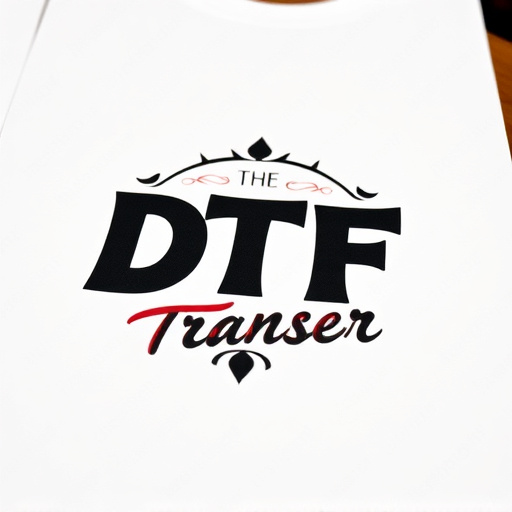
Removing carrier film after a DTF (Direct to Film) transfer application is a crucial step in ensuring optimal print quality and longevity of your DTF prints. Chemical solutions have proven effective in this process, offering a thorough cleaning method that complements mechanical techniques like scraper use. The right chemical solution can dissolve any residual adhesive or contaminants left behind by the carrier film, resulting in pristine DTF prints.
Commonly used chemicals for this purpose include specialized solvents and degreasers designed to break down adhesives without damaging the printed surface. Applying these solutions with a soft cloth or brush allows for precise control, ensuring only the film residues are targeted while maintaining the integrity of the DTF transfer. This meticulous approach is particularly important in the DTF printing industry, where high-quality prints require meticulous post-processing.
Advanced Methods for Delicate Prints

For intricate and delicate prints, advanced methods are required to ensure the careful removal of carrier film after a DTF transfer application. This is especially true for high-quality DTF printing where precision and detail are paramount. Techniques like using specialized solvents or heat treatments can be employed. Solvents specifically designed for DTF transfers can break down the adhesive properties of the carrier film, making it easier to peel away without damaging the print. Heat treatments, on the other hand, involve applying controlled amounts of warmth to loosen the bond between the film and the printed surface, allowing for a smoother removal process.
These advanced methods are particularly beneficial for complex DTF prints, ensuring that the fine details and subtle textures of the design are preserved. By carefully selecting and applying these techniques, print professionals can achieve impeccable results with DTF transfers, showcasing the versatility and precision of this printing method, whether for artistic expressions or high-quality commercial projects involving intricate DTF prints.
Best Practices for Optimal DTF Printing Results

When aiming for optimal DTF (Direct to Film) transfer results, adherence to best practices is paramount. Pre-printing preparation plays a crucial role in achieving crisp and vibrant DTF prints. This includes ensuring your film is clean and free from any debris or contaminants, as even the smallest particles can disrupt the printing process. Using high-quality carrier films designed specifically for DTF applications guarantees better adhesion and easier removal post-transfer.
During the printing process, maintaining consistent temperature and pressure settings is essential. Deviations can lead to uneven transfers, affecting print quality. Additionally, allowing adequate drying time between prints prevents ink smudging and ensures the DTF transfer adheres firmly to the substrate. Proper cleaning and maintenance of your printing equipment are also vital to prevent build-up that could hinder future DTF printing endeavors.




